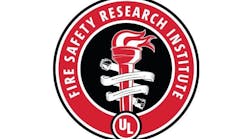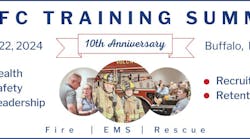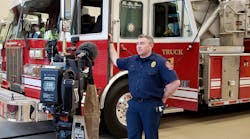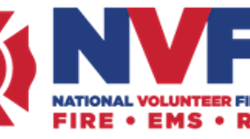“Integrated Tactical Accountability”
In Mark Emery’s August 2011 article, “Integrated Tactical Accountability: Part 3 – Why We Can’t Let Anybody Fall Through the Cracks,” he has some discussion (page 92) related to Divisions and Groups. As he correctly notes at the beginning of this discussion, NIMS (National Incident Management System) ICS (Incident Command System) defines Divisions as having responsibility for a geographic area while Groups are assigned specific functions. He then goes, in my opinion, astray with his change of the concept to define the responsibilities as assignment of objectives.
What he misses here is that in all cases, the incident commander (IC) is to define the specific objectives to be accomplished and do this by the use of effective strategies and tactics. An objective will require a minimum of one strategy and one tactic. During major incidents, an objective may require several strategies and multiple tactical assignments.
Tactical response to an incident is carried out through Divisions and Groups when they are used (remember, an IC can use a Task Force, Strike Team or Single Resource to accomplish tactics). As I noted above, the tactics fall after the IC has determined the incident objectives and strategies. An IC can be quite successful if he/she remembers that once the objectives are set then strategies must be determined. RECEOVS has served us well for decades and continues to do so; no need to invent new acronyms when this one guides us quite effectively.
So what happens in that Division? As an example, let’s say that a fire has occurred on the second floor of a two-story residential structure. The initial IC (normally the first-arriving company officer) must quickly determine the objectives (life safety, incident stabilization and property conservation – LIPs – and in what order they will be accomplished) and in this case, the objectives might be as simple as remove all occupants and put the fire out. Converting those objectives to strategies might find the IC selecting rescue, confine, extinguish and ventilation (yes, there is more work to be accomplished, but the next arriving commander will handle the expansion).
With recognition that the initial response might bring two or three engines and a special service (truck/heavy rescue), the initial IC may well assign an engine company officer as the Division 2 supervisor with the two engines and special service to conduct operations in the example given. As the Division 2 supervisor with knowledge of the objectives specific tactical assignments will be made to accomplish the strategies; i.e., personnel will be assigned to conduct a primary search (rescue), extinguish the fire (confine and extinguish) and clear the area of smoke and fire gases (ventilation). Hopefully, during the size-up, the initial IC would have called for additional resources, if required.
The next-arriving command-level officer, following an exchange of command, will need to ensure that additional objectives are developed (if needed), strategies and tactics determined and the appropriate assignments made. This IC may well want to assign a Group to handle functional requirements such as ventilation, water supply, salvage, etc.
As an incident expands, it’s the responsibility of the IC to ensure that an adequate organization exists. This is where Branches might be implemented to provide for an appropriate span of control. The IC will need to use logic in assigning Divisions and Groups to the appropriate Branch Director.
If a fire department trains in command competencies at all levels and the IC provides for strong leadership through an appropriate organization (the assignment of the proper organization elements), he/she will eliminate the freelancing Mr. Emery cites.
Roger A. McGary
Fire Chief
Silver Spring Fire Dept.
Silver Spring, MD
Mark Emery responds: I appreciate Chief McGary’s comments regarding my August 2011 article. Regarding RECEOVS, he is correct, that acronym has served well for decades. However, Lloyd Layman identified many more objectives than the Layman-based acronym represents. RECEOVS is not a menu or script; the acronym represents a handful of objectives (not methods) for addressing problems identified during size-up. RECEOVS has limited value because there are important tactical omissions.
For example, where is primary search (PS)? Rescue, search and rescue, and primary search are not synonymous terms nor objectives. Each term addresses a specific life-safety situation as determined by focused size-up. On the contemporary fireground, primary search is conducted as part of a two-in/two-out-compliant offensive operation.
Where is water supply (WS)? The letter V does not address the method of ventilation (OVV, DVV, PPV, HV), which is why I developed my status board shorthand information sheet.
I encourage Chief McGary to read part two, page 80, in the July 2011 issue of Firehouse® (part one was published in the February 2011 issue). I believe the chief would concur with my “operational congruency” model for ensuring that all actions begin with problem identification (also on page 80 of the July 2011 issue). RECEOVS starts in the middle of my operational congruency model.
Providing “strong leadership” and “appropriate organization” does not articulate a structured, systematic and consistent process for managing strategy, resources and risk (let alone for eliminating freelancing). ITAC provides a specific ICS implementation methodology that includes strategic tools that ensure tactical accountability is achieved and maintained throughout the course of any incident of any size.
To access parts one and two of “Integrated Tactical Accountability,” navigate to: www.imsalliance.com/ITAC, then click “ITAC Articles” on the right side of your browser.





